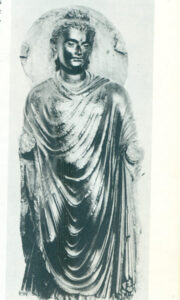 After conquering all the known world of his time, Emperor Ashok had chosen to be the champion of faith to spread the gospel of Four Noble Truths. Consequently he not only demobilized his army but converted them rank and file to a monastic order and gave them instructions to carry the message sans frontiers throughout the world.
After conquering all the known world of his time, Emperor Ashok had chosen to be the champion of faith to spread the gospel of Four Noble Truths. Consequently he not only demobilized his army but converted them rank and file to a monastic order and gave them instructions to carry the message sans frontiers throughout the world.
The accounts of his monk missionaries through South East Asia as well as the Middle East have been recorded earlier in this website.
However, as Ashok’s successors remained true to the lessons set before them by the noble King, it encouraged local chiefs to emerge as powerful alternative to Buddhism as they championed Brahminism. More and more princes under brahminic umbrella took the opportunity to claim their hegemony over the land and Buddhism, lacking no more stable patronage just faded away in silence. Consequently, as no more new blood was piped in, the old established order simply perished and forgotten so much so that the early European scholars were under the impression that the Buddha was of African descent.
While Buddhism flourished in the East nurtured by their own vigorous intellect, the Middle Eastern chapter was ousted by Judeo-Christianity and later by Islam.
It is through archaeological evidence at our disposal we are able to determine that Buddhism had undergone metamorphosis under Greco-Roman influence. We have examined several artefacts preserved in various museums of antiquity which show that Ashokan monk missionaries had engraved rock edicts in Greek as well as local languages for the benefit of the populace.
Presented here is the statue of the Buddha in Hellenic draperies who appears more like the Roman god Apollo than the Kirati-Mongolian prince that he was.
Photo: Courtesy Benjamin Rowland in Pelican History of Art
